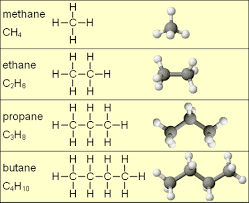Learn how elements are grouped in the periodic table
Learn how elements are grouped in the periodic table
Determining the group or period in which an element belongs to may be tricky at first but with time of practice, it will look very easy and simple. When I was thought this topic back then in school, I found it very difficult understanding it but I kept on practicing until I became a genius in this aspect of chemistry. You might want to know what I discovered while practicing and how I became good in this… this article has unveiled the hidden fact to grouping the most known elements (first twenty elements) using their electronic configuration and that’s why you should read this carefully to the end and follow each steps practically. You don’t wanna spend more time, right? Why don’t you pick up a piece of jotter and a pen.
• For you to determine the group or period in which an element belongs to, you should know the element, its symbol, and most especially its atomic number as this would help you in the next steps.
• While writing the electronic configuration, you must make sure it is correct and the suffix which is always a digit, when added together must be equivalent to the atomic number of the element in view. I hope you know how to write an electronic configuration, if not please make sure you learn how to before continuing with this article.
• After the atomic number of the element has been noted, write out the Electronic Configuration. An electronic configuration is something like this; 1s2, 2s2, 2p6, 3s2, 3p6, 4s2... thereby having 20 electrons- Calcium (Ca)
• Now, use the electronic configuration to determine its group and period and this is how it goes:
Using my example (that is, the electronic configuration of calcium) we can see that it ends with “4S2” meaning it has 4 electron shell and 2 valence electrons. Therefore, it belongs to period 4, Group 2.
NOTE: the first digit at the front of the alphabets is usually the period, if it is 4 then such element belongs to period 4, if it 3 such elements belongs to period 3, if it is 2 such elements belongs to period 2. Also, the last digit usually written in raise to power form is the group- if there are three variable belonging to same period, then all their powers are added to give the group such element belongs to. For example, we have “3S2, 3P6,” then the powers (I wrote mine as a suffix) which are 2 and 6 are added to give 2 + 6 = 8 thus, the element is a group 8 element or group 0 element as popularly known. That is when the prefix are the same- the element belongs to period 3 as written in the electronic configuration above.
Other example includes:
1. Potassium (K) with atomic number 19 will have its electronic configuration written as 1S2, 2S2, 2P6, 3S2, 3P6, 4S1. With these we can say the element is a period 4 group 1 element.2. Magnesium (Mg) with atomic number 12 will have its electronic configuration written as 1S2, 2S2, 2P6, 3S2. With these we can say the element is a period 3 group 2 element.
3. Phosphorus (P) with atomic number 15 will have its electronic configuration written as 1S2, 2S2, 2P6, 3S2, 3P3. With these we can say the element is a period 3 group 5 element, because, we have two variables with the same prefix (i.e. 3S2 and 3P3), so 2 and 3 must be added together to give us 5 which will be the group it belongs to and 3 remaining its period.
4. Aluminium (Al) with the atomic number 13 will have its electronic configuration written as 1S2, 2S2, 2P6, 3S2, 3P1. With these we can say the element is a period 3 group 3 element, because, we have two variables with the same prefix (i.e. 3S2 and 3P1), so 2 and 1 must be added which will then give us 3 which will be the group it belongs to and prefix 3 remaining its period.
5. Silicon with the atomic number 14 will have its electronic configuration written as 1S2, 2S2, 2P6, 3S2, 3P2. These has shown us that the element is a period 3 group 4 element.
I hope you found this piece of writing useful and you understood its contents, or you have a question you want to ask? You should use the comment box to let me know.
Kindly share this article to your friends or mates at school while you follow us by Email to receive all contents published on this site delivered directly into your mailbox.



Comments
Post a Comment